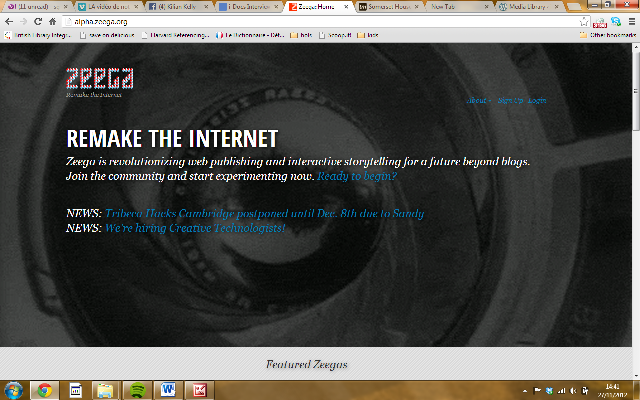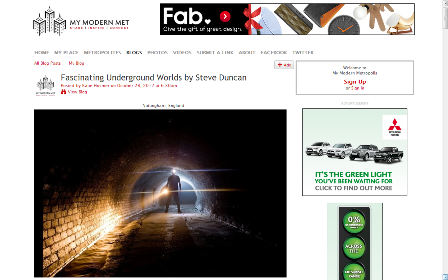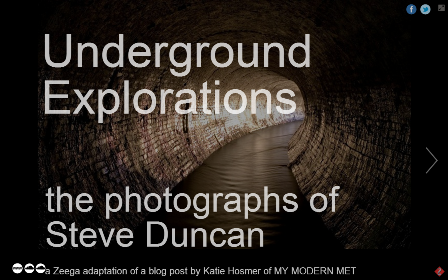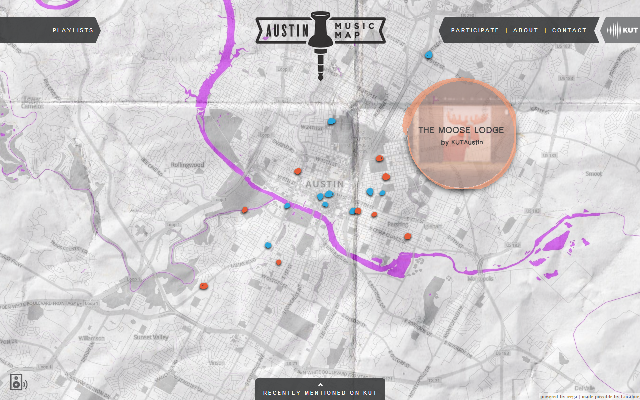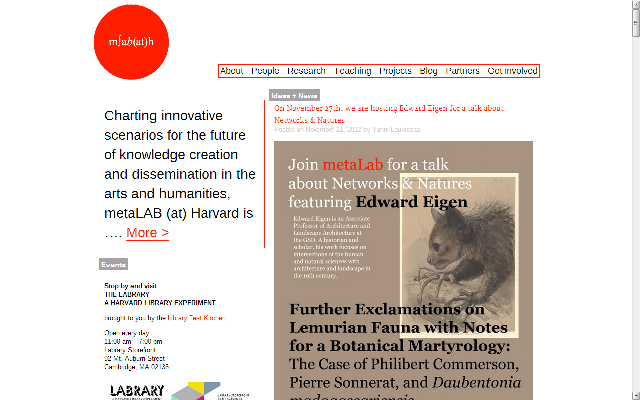It has been difficult to keep track of the authoring tool that have emerged lately: seven new tools (Klynt, Popcorn Maker, 3WDOC, Conductr, Storyplanet, Galahad and Zeega) in the last two years… enough for all of us to question how are they different and how can we choose between them when starting a new i-doc. This is why, at last year’s i-Docs conference, we decided to do a special session where Maria Yanez and Eva Dominguez confronted Klynt, 3WDOC and Popcorn Maker (you can see their final comparative chart/presentation here).
But this year the long waited for Zeega (a project founded by journalist Kara Oehler, creative technologist James Burns and media artist Jesse Shapins – a team that previously worked on Mapping Main Street) has finally been made available on the web. This means that we now have even more questions – and more choice!
When I heard that Zeega was demonstrated at the London Mozilla Festival, in October, I went along and had the honor, and pleasure, of meeting Jesse Shapins. This is how I discovered that Zeega is more than an interactive storytelling tool… it is a slow revolution, planned to be released in different phases, and it could well become a new verb in our daily cyber language: once you have finished tweeting, will you also zeega something to your friends?
What follows is an interview with Jesse Shapins that will hopefully answer some of your questions. So, if you are one of those that ponder “to zeega, or not to zeega”… please read along!
Sandra Gaudenzi: Zeega is already online and anyone can sign up to use it… is there an official date for its launch or will you gradually roll it out?
Jesse Shapins: Since September, we’ve been slowly supporting a growing global community. We read each person’s idea for a project they’d like to create, and then approve new users individually. While the platform itself is ready for many more users, we’ve chosen this gradual approach in order to devote our energy to developing personal relationships. The users right now are really part of shaping what Zeega becomes, as we continue to fix bugs and add new features directly in response to community feedback.
SG: In the last two years we have had the emergence of several interactive storytelling tools: Klynt, Popcorn Maker, 3WDOC, Galahad, Conductr, Storyplanet and Zeega. This is good news for i-docs producers, but it is also quite confusing – as one does not know what is the difference between them all. Could you help us out and tell us what Zeega is specially good at and who is it intended for? In which ways is it different from the others?
JS: Indeed, it has been quite a remarkable period of innovation! As an interactive storyteller myself, it’s so exciting. Every tool is really helping to further advance the discussion about the future of the web and what makes quality, engaging interactive experiences. At the Mozilla Festival, it was incredible how many people were so well-versed in the challenges/opportunities of these emerging forms. I really think all of the new tools have helped catalyze a much richer discourse within the community.
Our tagline “Remake the Internet” helps indicate what distinguishes Zeega. From the beginning, we’ve been imagining a platform that places innovative storytelling at its center and truly operates at the scale of transformative web technologies like Tumblr, WordPress, Twitter, etc. We want to make it possible for anyone to experiment with the web as a creative medium. We believe the Internet is ripe for re-imagining, ready to move beyond the creative frames that have dominated the past decade.
Right now, I’d say Tumblr is the best tool for online creative expression. Without any programming experience, one can easily set up a dynamic site and exercise flexibility over the format (a stark contrast to something like Facebook, which is so narrow and rigid). But Tumblr is still wedded to the blog as the dominant paradigm for the website. While many Tumblr sites are very media-driven, they are still long lists. The author has no control over pacing and can’t combine images, audio and video. We’re aiming to introduce a new model.
Our goal is to usher in an era when audio, image and pacing define web experiences. An era when the web truly becomes more immersive. I think a great example of this is how this blog post was transformed into this Zeega. We’re on the cusp of a sea change in web publishing, as I think the print model of the blog will be displaced.
Zeega is a dynamic, community-driven ecosystem. Because Zeega is based on live linking and always integrates proper citations, the creative expanses of the web are now available for new uses. The final output of a Zeega is actually a website; it’s not a video. You can’t “download” a Zeega; it relies on the connectivity of the web to assemble links from across the Internet. This networked character is part of what we believe makes the platform so powerful and offers the prospect of really remaking the Internet.
For example, I love this recent mash-up of archival footage and contemporary dub. This media was sourced from the Prelinger Archive and Free Music Archive. Part of the fun of this project is the looping media and the simple interactivity of flipping back and forth between videos as I choose. When I saw this project, I got excited about how DJs/VJs could use Zeega, as you can so easily click between videos using the arrow keys on the keyboard to create live visual mixes. A standard video could never achieve this same character. From what I can tell, it’s to not possible to make something with this level of interactivity and multiple media sources with other tools.
We also love memes and the more playful sides of the web. For example, we’ve seen a growing interest in our community to make “audioGIFs,” short animations that combine sound with motion such as this dancing cat. Or this experiment in horror that uses animations, sound and a few interactive options. And we’re seeing this type of content really get shared amongst people in the community and across the web. We have opted for a very open approach, really letting users go wild in terms of the format of what they make (e.g. I think this Zeega project is just wonderfully bizarre). This flexibility has its pros and cons, but I do think it’s safe to say that Zeega offers the most flexibility in comparison to other platforms. You simply have the entire screen as your canvas, the web as your palette and you can entirely define the modes of interaction yourself.
In general, my sense is that Zeega places a stronger emphasis on community than most of the other authoring platforms. All Zeega users have individual profile pages, and we’re increasingly showcasing the community’s work on our home page.
A central part of the community experience will be the Zeega Media Library, a new set of features we’ll be introducing in the next couple of months. Users will have access to all of the public media added by others in the community, creating a radically self-organizing commons. Users will be able to easily create collaborative media collections to work on a project, allowing people to have a shared pool of media and the ability to produce individual works. There will also be large-scale, high-quality repositories (e.g. all of Harvard’s open access photo collections and the Prelinger Archives), as well as community-curated collections (e.g. the best GIFs on Tumblr). As far as I know, no other platform is developing a networked media library side to their application, and I think this will really reinforce and support the collaborative, community spirit behind Zeega.
Giving users the ability to author dynamic, participatory sites is also vital to Zeega. People will be able to create sites tied to specific hashtags that auto-update when media assets are added across the web with a specific tag. For example, The Austin Music Map lets you “play the city” by navigating through playlists that combine professionally-produced stories and dynamically-generated streams of media drawn from community contributions. The Zeega platform is constantly checking for media on Instagram, Flickr, SoundCloud and YouTube with #austinmusicmap and then automatically adding the latest uploads to the project’s Zeega database. The additional tags and geodata then serve as the basis for the playlists. One of my favorites is the “Street Music” playlist.
Another example of a project using these Zeega features is Planet Takeout. The project aims to document the stories of Chinese takeouts around the world. The project uses observational videos as interfaces to professionally-produced stories about three main takeouts. The project also invites anyone to submit photos, videos and audio related to takeouts globally, which then appear in the collections and on the map. (For those familiar with our past work, you can see that we’ve now made it possible for people to create projects like Mapping Main Street using Zeega).
Lastly, mobile has been integral to our strategy from the beginning, as we’ve been building in HTML5 all along. We’re currently working on making it possible for Zeegas to be viewed on mobile and tablet devices. But for us, mobile is not just about viewing projects. The Zeega mobile app will allow users to easily record images, audio and video to use in their own Zeega projects or contribute to other community projects. For example, we imagine the Zeega app will be great for collaboratively documenting large-scale events like the recent U.S. election. In this way, the app becomes an all-in-one field recording device, connected to a collaborative, distributed system for editing and visualization.
SG: Although Zeega can be used for i-doc production it is also a tool that can be used for any type of interactive storytelling. What is your secret ambition for it? Where would you like it to be in five years time?
JS: We’d love to really transform the culture of creativity online. We want to make it possible for people without programming experience to actually manipulate the web itself. We’d love to make the web a more beautiful place. Right now, most websites simply have too many choices. We want to transform the web into a more immersive environment.
Currently, the power to actually experiment with the web as a medium is only available to those with programming experience. We want to change those power dynamics. In five years, our dream is for Zeega to have ushered in a new era when the authoring of immersive web experiences has truly been democratized.
SG: What is Zeega’s economic model for the future?
JS: Since 2010, we’ve been operating as an independent non-profit, which has been a fantastic context. We’ve been working primarily with grant funding from the Knight Foundation, allowing us to really experiment and work with longstanding partners in the journalism and documentary communities. From the beginning, though, we’ve understood that for Zeega to survive we’d need to develop a sustainable model that extends beyond grants. As we grow, we’re now developing a hybrid non-profit/for-profit model. The non-profit will remain dedicated to the open-source community surrounding Zeega, as well as serve as a venue for our own grant-driven documentary projects . The new company will be focused on growing Zeega as a web startup. The main features of Zeega will always remain free, but advanced features and media storage capacity will be offered at a monthly price. Honestly, I’ve found the creative thinking required to architect this hybrid model extremely invigorating, and I hope that we can prove that successful startups can have a very strong mission and be sustainable.
SG: You come from an artistic and academic background, and Zeega is probably taking most of your professional time right now. What are the academic and the artist in you learning through the launch a production tool?
JS: Whew! This question begs for more of a beer than a keyboard : )
As you know, I have just defended my dissertation (for those interested, a relatively recent draft is here). And during the course of Zeega, myself, Kara and James also started a research lab at Harvard dedicated to many of the questions related to this area of work. We’ve also regularly been teaching, creating a series of new courses such as Media Archaeology of Place and The Mixed-Reality City.
Throughout these years, there has been a wonderful cross-fertilization between the academic, artistic and entrepreneurial. I think my academic research has certainly helped inform some of the design principles that have gone into Zeega (and been a part of coming up with the name!) Just speculating, but I think the academic side has also been helpful in focusing our energies on what makes quality stories/experiences, instead of just getting caught up in fetishizing the most exciting technology. It’s also been invaluable in forcing us to develop rigorous thinking about Zeega and how it relates to the history of media and our contemporary condition.
That said, I do think that sustaining these multiplicities of activity can be challenging over time. In particular, as we move into this moment of really aiming for a transformative impact at the scale of something like Tumblr, it’s going to require intense focus. For this reason, we’re choosing right now to focus 100% of our energy on Zeega as we release it more broadly and enter this next phase of our development. I think we’re all so passionate about what it can become that we want to give ourselves the context to really support that. Academic and artistic thinking will continue to be a part of this, but I’m really looking forward to just having “one job” that is at the core of everything.
Down the line, of course, who knows what will happen. I could certainly see researching/teaching again in the future. And some day, I hope to have time to make my own artistic projects using Zeega and other platforms! (For example, I’d love to create an updated web-native version of The Colors of Berlin).
Thank you Jesse for your time and… congratulations for your well deserved PhD, Dr Shapins!
Sandra Gaudenzi

